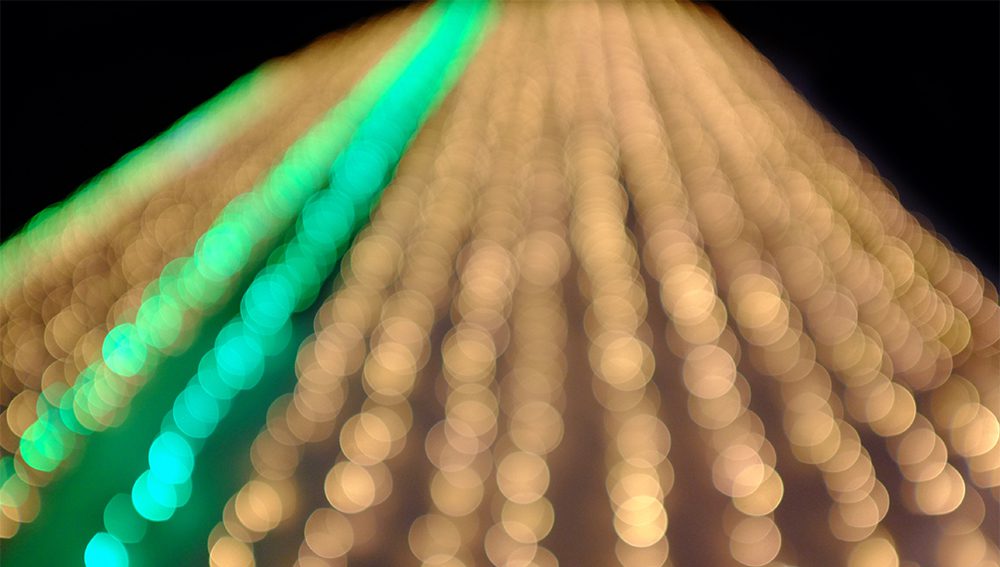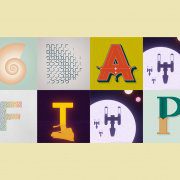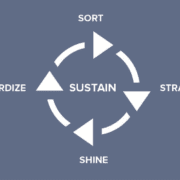Retro Reimagining with Lenticular Printing
Remember the old plastic-covered photographs you’d pull from a cereal box that would replicate motion or animation when tilted back and forth? This method of printing is actually referred to as lenticular printing. It creates this effect by using separate images or frames broken up into bars and pushed together as one single image. A transparent lenticular sheet added overtop the final sandwiched image actively isolates the different images when viewed from different angles and generates the impression of fluid animation.
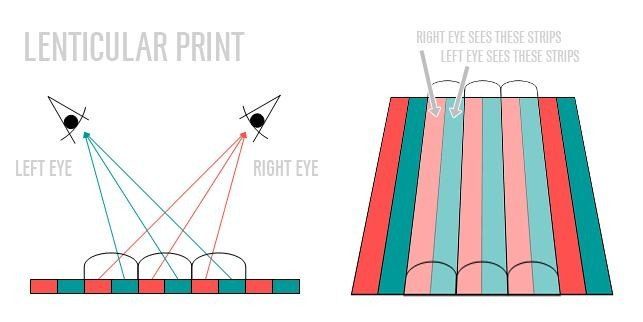
Diagram from Afga Graphics
The idea of lenticular printing fell into our lap as the most dynamic way to bolster the invite for the upcoming Vance Thompson Vision symposiums. The theme of this year’s symposium is Back to the Future, so this allowed us to explore and meet the middle ground of Drew Struzan’s masterful original poster work for the beloved film series and the illusion of animation through lenticular prints. We melded these concepts together to create an irregular yet striking print guaranteed to capture the eye of any invitee.
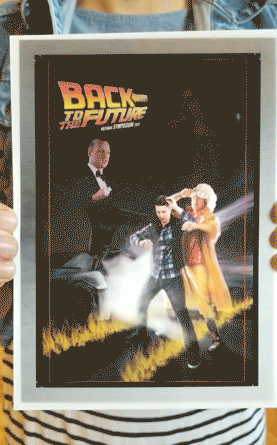
Lenticular printing is an effective concept for a number of reasons, the main being the appearance of animation or video. People have been using and appreciating video for more than a century. But the caveat of the medium is that it nearly always needs some source of power and a screen to function properly. Though brief (a few frames), lenticular prints allows video and animation to bypass this hurdle and creates organic animation powered by your own perspective.
Lenticular also opens up a world of possibilities for designers beyond animation. It creates an opportunity for truly dynamic typography and illustration. It can reveal different information or elements singularly within the same composition. For example, if there is a train stop that needs to provide travel information to passengers passing through the platform. They understand that passengers coming from one direction of the platform need different information than that of the passengers approaching from the opposite side. With the use of lenticular printing, a single sign could provide both parties with the information relevant to them based their different perspectives.

Lenticular printing presents a number options to designers and creatives, many of which remained untapped. Whether for the printed illusion of animation or information control within compositions, it provides a number of interesting solutions. We’ve been enthused by our first foray into the medium and hope to implement it again soon.

Joel Jochim is a graphic designer at Matt Jensen Marketing.

